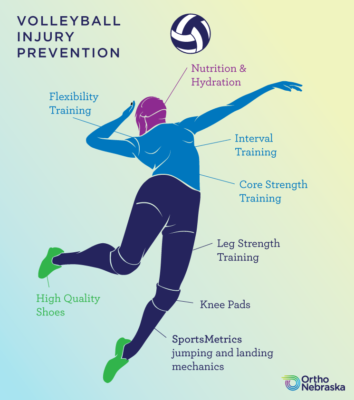Injury Prevention in Sports and Exercise
Sports and exercise play a crucial role in maintaining a healthy lifestyle. Regular physical activity helps improve cardiovascular health, boost muscle strength, and enhance mental well-being. However, engaging in sports and exercise also carries the risk of injury, which can hinder one’s ability to participate and achieve fitness goals. This article explores the importance of injury prevention in sports and exercise, highlighting the significance of adopting proper techniques and utilizing protective measures.
The Impact of Injuries
Sport-related injuries can have significant consequences, both in terms of physical health and overall quality of life. They can lead to pain, limited mobility, and increased risk of future injuries. Additionally, injuries can result in time away from sports and exercise, impacting overall fitness levels and mental well-being. By focusing on injury prevention, individuals can reduce the likelihood of these negative outcomes and continue to enjoy the benefits of physical activity.
Preventing Injuries
Prevention is key when it comes to minimizing sports and exercise-related injuries. Here are some important strategies to consider:
1. Warm-up and Cool-down
Undertaking a proper warm-up routine before engaging in physical activity is essential for injury prevention. It helps increase blood flow to the muscles, loosens joints, and prepares the body for the upcoming demands. Similarly, cooling down with stretches and gentle exercises after a workout helps prevent muscle stiffness and supports recovery.
2. Gradual Progression
When starting a new sport or exercise routine, it is vital to progress gradually. Pushing too hard, too soon can lead to overuse injuries or muscle strains. Gradually increasing the intensity, duration, and frequency of workouts allows the body to adapt and become stronger while minimizing the risk of injury.
3. Proper Technique and Form
Using proper technique and maintaining correct form during sports and exercise activities is crucial in preventing injuries. Seek guidance from trained professionals or coaches to ensure you are using the right movements and postures for your specific sport or exercise. Avoiding shortcuts and focusing on proper techniques significantly reduces the risk of strains, sprains, and other injuries.
4. Appropriate Equipment
Wearing appropriate gear and equipment is a fundamental aspect of injury prevention. Depending on the activity, this can include helmets, knee pads, gloves, or supportive footwear. The equipment should be well-fitted and in good condition to provide optimal protection.
5. Cross Training and Rest
Engaging in a variety of sports and exercises, rather than focusing solely on one activity, can help prevent overuse injuries. Cross training allows different muscle groups to be used and reduces the strain on specific areas. Additionally, getting enough rest and allowing the body time to recover between workouts is essential for injury prevention. Adequate rest helps rebuild muscle tissues and recharge the body for future activities.
Conclusion
Injury prevention should be a priority for anyone involved in sports and exercise. By implementing effective strategies such as proper warm-up and cool-down routines, gradual progression, employing correct technique and form, using appropriate equipment, and incorporating cross training and rest, individuals can significantly reduce the risk of injuries. Remember, injury prevention not only helps maintain physical health but also enables long-term enjoyment and participation in sports and exercise activities.


